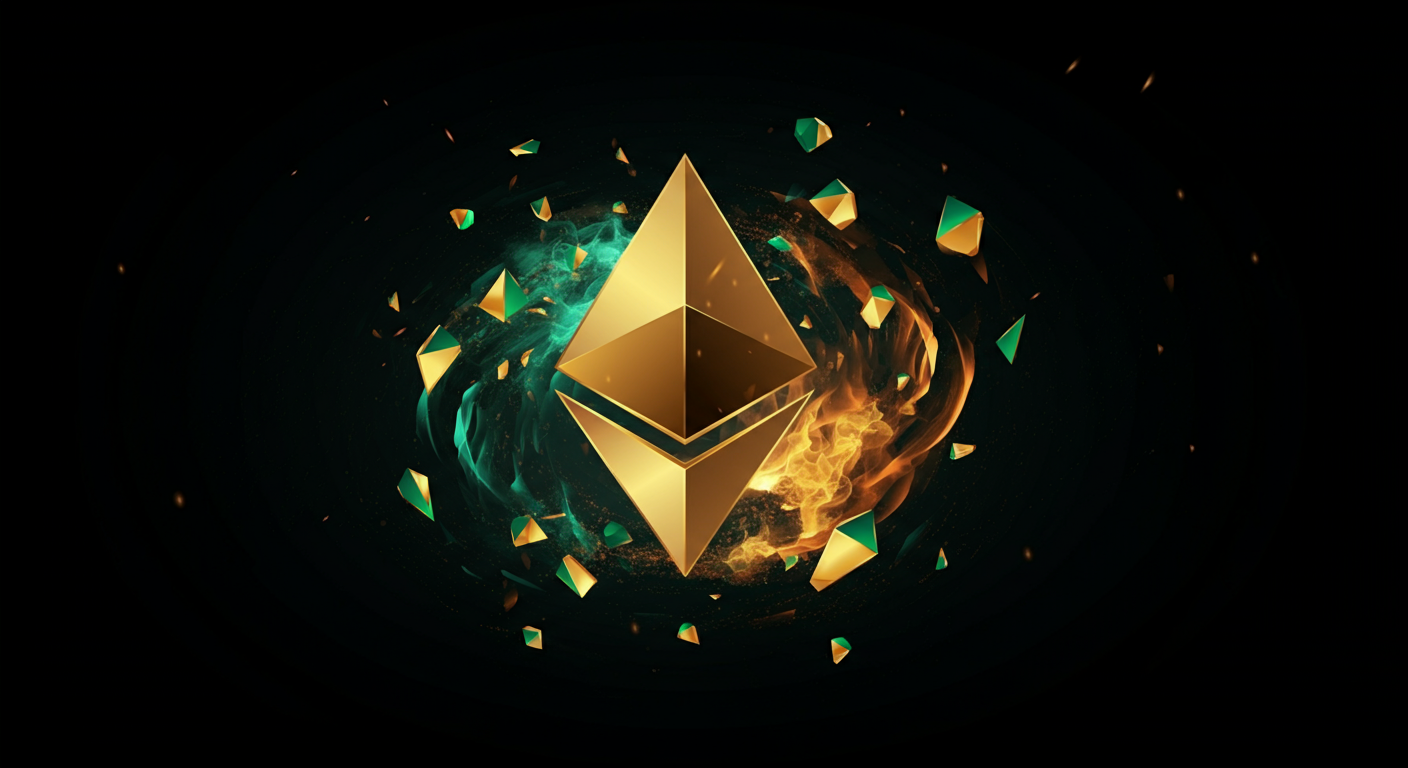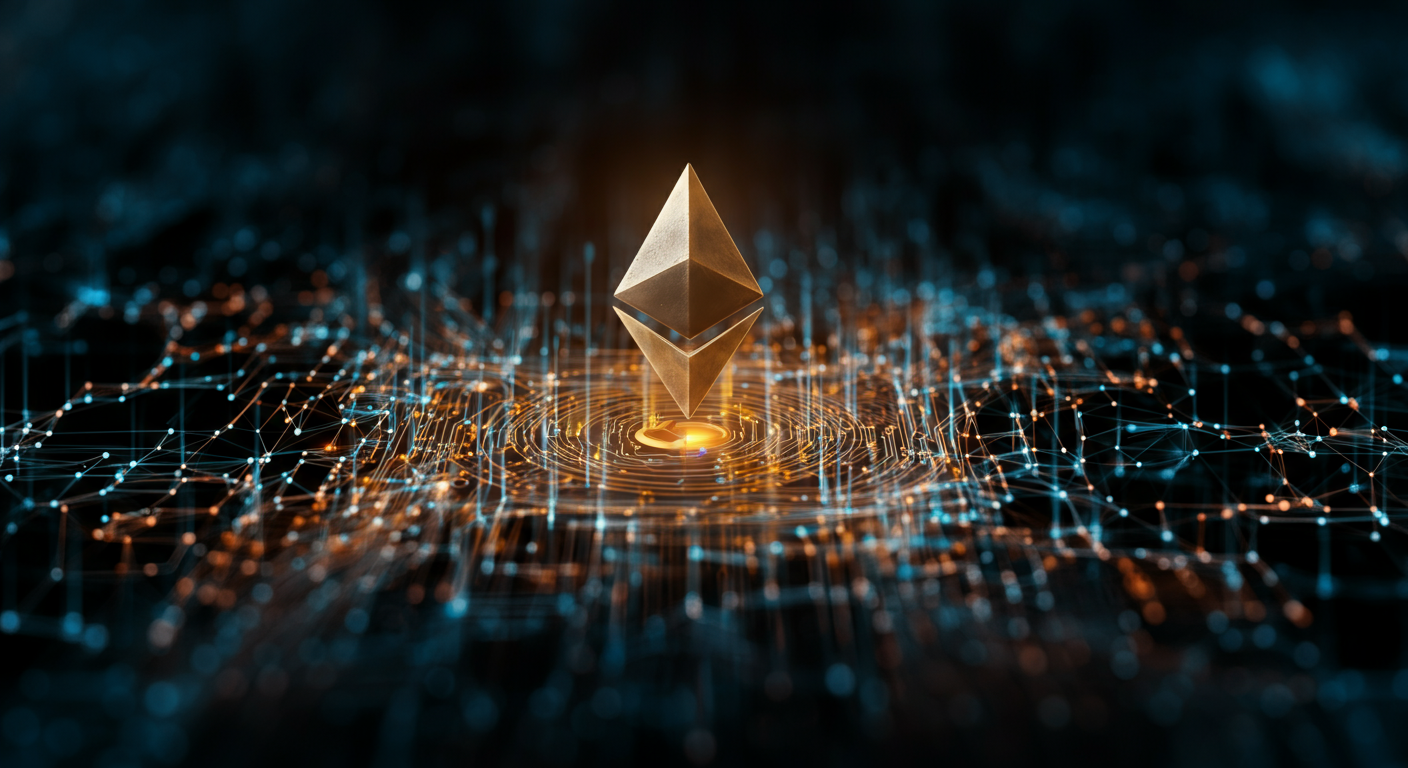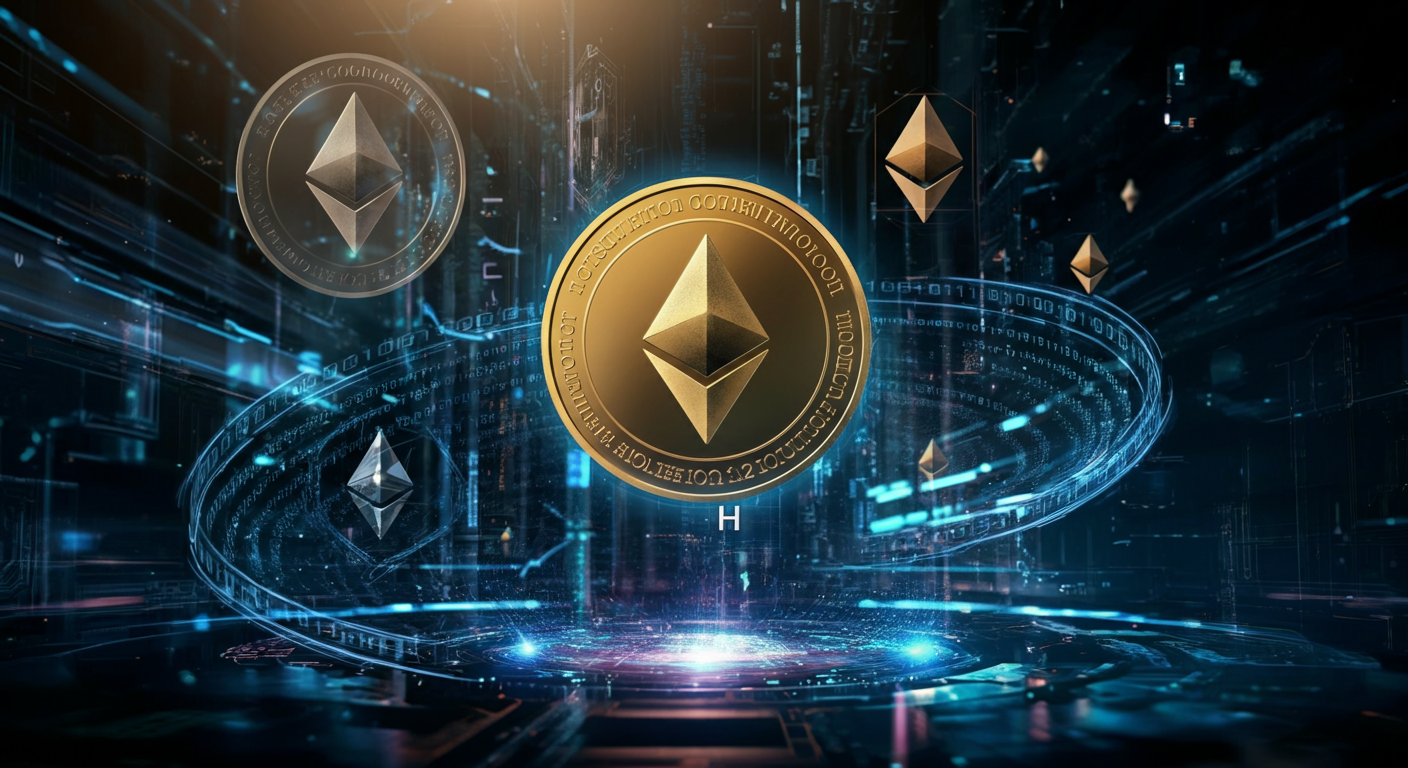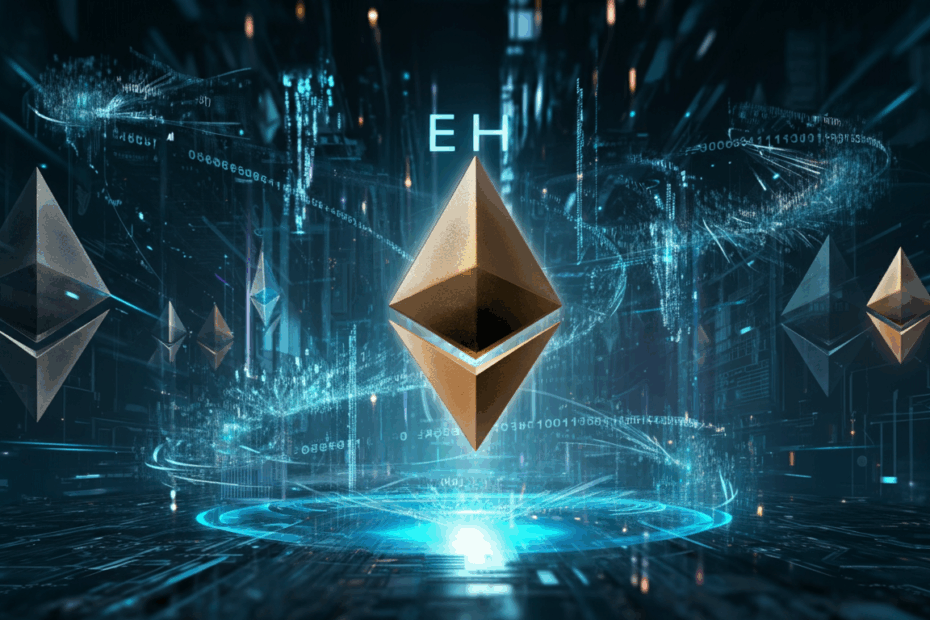Quick Guide Video
First, watch this 120-second explainer video to get a quick overview of Ethereum ETH. After that, the article will dive deeper into the details.
New to crypto? 🤔 Ethereum ETH is more than just digital money! Discover its tech, future, and what X is buzzing about. #EthereumGuide#Ethereum #ETH #Blockchain
🎧 Listen to the Audio
If you’re short on time, check out the key points in this audio version.
📝 Read the Full Text
If you prefer to read at your own pace, here’s the full explanation below.
Basic Info
John: Hey Lila, today we’re diving into Ethereum, often just called ETH for its native cryptocurrency. Ethereum is like the Swiss Army knife of blockchains—it’s a decentralized platform that lets people build all sorts of apps without needing a central authority. Think of it as a global computer that anyone can use to create smart contracts, which are like self-executing agreements. In the past, Ethereum was launched back in 2015 by a team led by Vitalik Buterin, inspired by Bitcoin but wanting to go beyond just digital money to enable programmable transactions.
Lila: That sounds fascinating, John! So, why are people buzzing about it right now? From what I’ve seen on X, there’s a lot of chatter about recent updates and how it’s evolving. As of now, based on posts from the official Ethereum account on X, there’s excitement around things like autonomous agents and ecosystem updates, showing it’s very much alive and kicking in 2025.
John: Exactly, Lila. People are talking about it because Ethereum powers so much of the crypto world, from finance to art. Looking ahead, with ongoing upgrades, it’s set to become even faster and cheaper to use, which could bring in more everyday folks like you and me.
Lila: Cool! I love how it’s not just about money—it’s about building a whole new internet.

Core Technology / Features
John: Let’s break down the tech, Lila. At its core, Ethereum is a blockchain, which is like a shared ledger that records transactions securely. In the past, it used a system called Proof of Work, similar to Bitcoin, where computers solved puzzles to validate transactions—think of it as miners digging for gold to keep the network honest.
Lila: Oh, that makes sense. But I’ve heard it’s changed. What’s happening as of now?
John: Right you are. As of now, Ethereum has switched to Proof of Stake, which is more energy-efficient. Instead of mining, people “stake” their ETH (lock it up) to help secure the network, like putting down a deposit to vote on what’s true. This reduces energy use dramatically. For scalability, solutions like Layer 2 networks—think of them as express lanes on a highway—help handle more transactions without clogging the main road.
Lila: Express lanes, I get it! And special features? Like smart contracts?
John: Yes, smart contracts are a big one—they automate deals, like a vending machine that gives you a snack once you insert the coin, no middleman needed. Another feature is its virtual machine, which runs code reliably. Looking ahead, upgrades like Danksharding aim to make data storage cheaper and faster, potentially handling millions of transactions per second.
Lila: Wow, that could change everything. It’s like upgrading from a bicycle to a high-speed train!
Tokenomics / Supply Model
John: Tokenomics is about how the ETH token works economically. In the past, Ethereum launched with an initial coin offering in 2014, raising funds by selling ETH early on. There was no hard cap on supply initially, which worried some about inflation.
Lila: Inflation like prices going up? How does that work in crypto?
John: Sort of—too much supply can dilute value. As of now, after the Merge to Proof of Stake in 2022, ETH has a dynamic supply. New ETH is issued to stakers as rewards, but there’s also a burning mechanism: part of transaction fees gets burned (destroyed forever), which can make ETH deflationary if activity is high. It’s like balancing creation and destruction to keep things stable.
Lila: Burning tokens sounds intense! What’s planned for the future?
John: Looking ahead, with more upgrades, the burning could increase as the network scales, potentially making ETH scarcer over time. Staking remains key, where you lock ETH to earn more, encouraging long-term holding.
Lila: So it’s like planting a tree that grows more fruit if you take care of it. Neat!

Use Cases & Ecosystem
John: Ethereum’s ecosystem is huge. In the past, it kickstarted DeFi (decentralized finance), where you can lend, borrow, or trade without banks—like a peer-to-peer marketplace for money. NFTs (non-fungible tokens) also exploded here, turning digital art into collectibles.
Lila: NFTs are like unique digital baseball cards, right? What about now?
John: As of now, DeFi on Ethereum manages billions in value, with apps like Uniswap for swapping tokens easily. Business uses include supply chain tracking, and infrastructure like oracles bring real-world data in. Partnerships with companies like Microsoft and integrations with Web3 wallets make it versatile.
Lila: And for the future? Any exciting applications coming up?
John: Looking ahead, we’re seeing growth in decentralized social networks, gaming, and even AI agents, as mentioned in recent X posts from Ethereum’s account. It’s building towards a more interconnected digital world.
Lila: I can imagine playing games where I truly own my items. That’s empowering!
Developer Team & Community Engagement
John: The team behind Ethereum is led by visionaries like Vitalik Buterin, who’s been involved since the start. In the past, the Ethereum Foundation coordinated development, funding research and upgrades.
Lila: Vitalik seems like a big deal on X. How active are they now?
John: As of now, updates are frequent—the Ethereum Foundation shares bi-weekly threads on X about ecosystem progress, like the one from August 2025 discussing autonomous agents. Community engagement is high, with AMAs, Discord chats, and forums buzzing with ideas.
Lila: What’s next for the team?
John: Looking ahead, they’re focusing on scalability and privacy, with a decentralized approach where community input shapes the roadmap. It’s not just a team; it’s a global movement.
Lila: That community energy must keep things innovative and fun!
Rewards & Incentives (if applicable)
John: Ethereum offers rewards through staking. In the past, under Proof of Work, miners got block rewards, but that shifted.
Lila: Staking sounds rewarding. Details?
John: As of now, you can stake ETH (minimum 32 ETH or via pools) to validate transactions and earn around 3-5% annually in new ETH. There are also liquidity mining in DeFi protocols where providing liquidity earns tokens.
Lila: And future incentives?
John: Looking ahead, as the network grows, staking yields might adjust, and new incentives could emerge for Layer 2 participation, encouraging more users to join.
Lila: It’s like getting interest on your savings, but crypto-style!
Competitor Comparison
- Compared to Bitcoin, which is mainly digital gold, and Solana, which boasts faster speeds but has had outages.
John: Ethereum stands out because of its massive developer community and proven track record—it’s like the established city everyone wants to build in.
Lila: Yeah, while Solana is speedy, Ethereum’s security and decentralization make it more reliable for big money stuff.
John: Exactly, and unlike Bitcoin’s simplicity, Ethereum’s smart contracts enable complex apps, giving it broader utility.
Risk Factors and Challenges
John: No project is perfect. In the past, Ethereum faced scalability issues, leading to high fees during busy times, like a traffic jam on a popular road.
Lila: Ouch, that sounds frustrating. Current risks?
John: As of now, there’s still some network congestion, plus regulatory scrutiny—governments might impose rules on crypto. Security risks like smart contract bugs have caused losses before.
Lila: And sustainability? I’ve heard about energy use.
John: Good point. Post-Merge, it’s much greener, but inflation from rewards is a watchpoint. Looking ahead, challenges include competition from newer chains and potential quantum computing threats to security.
Lila: So, always DYOR, right? Stay informed!
Industry Expert Insights
John: From X, Vitalik Buterin often shares thoughts on scalability. He recently emphasized how Layer 2 solutions are key to Ethereum’s growth, paraphrasing that they’re essential for handling global scale without compromising decentralization.
Lila: That’s insightful. Any others?
John: Analyst Anthony Sassano, active on X, highlights in threads how Ethereum’s ecosystem is thriving with updates, noting that autonomous agents could be the next big wave, unlocking new commerce frontiers.
Lila: Experts like that make it easier to understand the big picture!
X Community Buzz & Roadmap Updates
John: The X community is buzzing! Recent posts from Ethereum’s account discuss autonomous agents with wallets, predicting they’ll become major users, like self-driving taxis owning themselves.
Lila: That’s futuristic! What’s on the roadmap?
John: In the past, roadmaps focused on the Merge. As of now, threads cover bi-weekly updates on builders’ progress. Looking ahead, expect Verge and Purge upgrades for better efficiency and data management.
Lila: The excitement on X really shows the passion—people are sharing ideas non-stop!

FAQ (minimum 6 questions)
What is Ethereum?
John: Ethereum is a blockchain platform for building decentralized apps, with ETH as its currency.
Lila: It’s like a foundation for the new web!
How do I buy ETH?
John: Use exchanges like Coinbase or Binance, but remember to use a secure wallet.
Lila: Start small and learn as you go!
What are smart contracts?
John: Self-executing code that runs when conditions are met, like an automatic payment.
Lila: No lawyers needed—cool!
Is Ethereum better than Bitcoin?
John: It depends; Ethereum is more versatile for apps, while Bitcoin is for value storage.
Lila: Both have their strengths!
How does staking work?
John: Lock ETH to support the network and earn rewards, like earning interest.
Lila: But it’s locked for a while, so plan ahead!
What’s the future of Ethereum?
John: More scalability and adoption, potentially powering Web3.
Lila: Exciting times ahead!
Are there risks with Ethereum?
John: Yes, like volatility and hacks, so be cautious.
Lila: Always research thoroughly!
Related Links
Final Reflections
John: After exploring Ethereum ETH together, I can say it’s one of those projects that’s both interesting and approachable for newcomers.
John: It’s great to see how it blends innovation with a friendly, active community. I think it’s worth keeping an eye on!
Lila: Absolutely, John! I learned so much today. I love how blockchain projects like this can be explained without all the confusing jargon.
Lila: I’m looking forward to checking in on Ethereum ETH in the future to see how it grows!
Disclaimer: This article is for informational purposes only. Please do your own research (DYOR) before making any investment or usage decisions.
